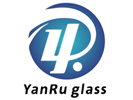When choosing glass bottles for your essential oils, you will have a variety of colors to choose from. While it may be tempting to choose the most visually appealing color, you need to factor in how light will affect your product. As an essential oil vendor, which colored glass should you purchase to best suit customers’ needs?
There are four common options for colored glass for essential oil bottles:
- Amber or Brown
- Flint or Clear
- Cobalt Blue
- Green
Each color has its own aesthetic and protective factors. In order to make the best decision for your products, factor in light protection, shelf life, and marketing. In regard to light protection, the darker and more opaque the glass, the more protection it offers against oxidation. Oxidation breaks down the oils and negate the therapeutic value of essential oils over time.
The Effect of Light on Essential Oils
Light can be broken down into two categories along the electromagnetic spectrum: invisible light and visible light. The invisible light that is most concerning for colored glass for essential oil bottles is ultraviolet light.
Sunlight contains ultraviolet radiation (UV rays) that are harmful. In fact, these rays are why we wear sunscreen and sunglasses—we want to protect our skin and eyes from UV ray damage that can turn into skin burns and skin cancer. These UV rays destroy our skin cells in the same way that it degenerates the makeup of essential oil.
The Benefits of Amber Glass
Amber glass offers a protection against light wavelengths within the 10 nm to 400 nm range. This is the ideal spectrum to protect against UV light radiation, which is why many pharmaceutical and beverage manufacturers choose amber bottles.
The Downside to Blue and Green Glass
While blue and green bottles may be more visually appealing, they do not offer as much protection to your oils. These colors provide protection against visible light, but are unable to protect your oils against UV rays. They are also typically a little more expensive than amber or flint bottles.
Post time: Oct-09-2022





